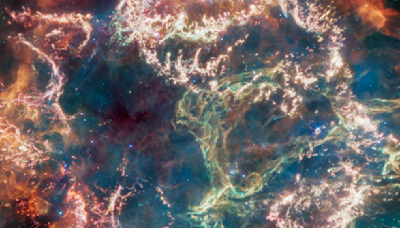Search results
Dec 14, 2016 · All the studies on light from the antiquity until the middle of nineteenth century were based on incoherent light sources such as the sun, candle light, sodium lamp, or light bulb. In 1950s a new coherent source of light was invented, first in the microwave region and then in the optical region.
- M. Suhail Zubairy
- zubairy@tamu.edu
- 2016
The main source of natural light on Earth is the Sun. Historically, another important source of light for humans has been fire, from ancient campfires to modern kerosene lamps. With the development of electric lights and power systems, electric lighting has effectively replaced firelight.
Apr 6, 2024 · Light from the Sun warms the Earth, drives global weather patterns, and initiates the life-sustaining process of photosynthesis; about 10 22 joules of solar radiant energy reach Earth each day. Light’s interactions with matter have also helped shape the structure of the universe.
- What is light in physics?Light is electromagnetic radiation that can be detected by the human eye. Electromagnetic radiation occurs over an extremely wide range of waveleng...
- What is the speed of light?The speed of light in a vacuum is a fundamental physical constant, and the currently accepted value is 299,792,458 metres per second, or about 186,...
- What is a rainbow?A rainbow is formed when sunlight is refracted by spherical water droplets in the atmosphere; two refractions and one reflection, combined with the...
- Why is light important for life on Earth?Light is a primary tool for perceiving the world and interacting with it for many organisms. Light from the Sun warms the Earth, drives global weat...
- What is colour's relation to light?In physics colour is associated specifically with electromagnetic radiation of a certain range of wavelengths visible to the human eye. The radiati...
Apr 1, 2007 · Learn how the search for the true nature of light has evolved over time, from ancient Egypt to modern quantum mechanics. Discover the contributions of some of the most illustrious scientists in history, such as Alhazen, Huygens, Newton, Young, Maxwell, and Planck.
Theoretical and experimental work in the mid to late 19th century convincingly established light as an electromagnetic wave, and the issue seemed to be resolved by 1900. With the arrival of quantum mechanics in the early decades of the 20th century, however, the controversy over the nature of light resurfaced.
How did the greatest thinkers in history, from Einstein to Da Vinci, uncover the secrets of light? Explore the fascinating stories and discoveries that shaped our understanding of this fundamental force of nature.
The first connection between electric and magnetic effects was discovered by Danish physicist Hans Christian Ørsted in 1820 when he found that electric currents produce magnetic forces. Soon after, French physicist André-Marie Ampère developed a mathematical formulation ( Ampère’s law) relating currents to magnetic effects.







